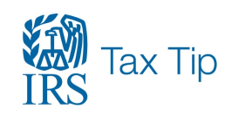|
The Internal Revenue Service today clarified the tax treatment of state and local tax refunds arising from any year in which the new limit on the state and local tax (SALT) deduction is in effect. In Revenue Ruling 2019-11, posted today on IRS.gov, the IRS provided four examples illustrating how the long-standing tax benefit rule interacts with the new SALT limit to determine the portion of any state or local tax refund that must be included on the taxpayer’s federal income tax return. Today’s announcement does not affect state tax refunds received in 2018 for tax returns currently being filed.
The Tax Cuts and Jobs Act (TCJA), enacted in December 2017, limited the itemized deduction for state and local taxes to $5,000 for a married person filing a separate return and $10,000 for all other tax filers. The limit applies to tax years 2018 to 2025. As in the past, state and local tax refunds are not subject to tax if a taxpayer chose the standard deduction for the year in which the tax was paid. But if a taxpayer itemized deductions for that year on Schedule A, Itemized Deductions, part or all of the refund may be subject to tax, to the extent the taxpayer received a tax benefit from the deduction. Taxpayers who are impacted by the SALT limit—those taxpayers who itemize deductions and who paid state and local taxes in excess of the SALT limit—may not be required to include the entire state or local tax refund in income in the following year. A key part of that calculation is determining the amount the taxpayer would have deducted had the taxpayer only paid the actual state and local tax liability—that is, no refund and no balance due. In one example described in the ruling, a single taxpayer itemizes and claims deductions totaling $15,000 on the taxpayer’s 2018 federal income tax return. A total of $12,000 in state and local taxes is listed on the return, including state and local income taxes of $7,000. Because of the limit, however, the taxpayer’s SALT deduction is only $10,000. In 2019, the taxpayer receives a $750 refund of state income taxes paid in 2018, meaning the taxpayer’s actual 2018 state income tax liability was $6,250 ($7,000 paid minus $750 refund). Accordingly, the taxpayer’s 2018 SALT deduction would still have been $10,000, even if it had been figured based on the actual $6,250 state and local income tax liability for 2018. The taxpayer did not receive a tax benefit on the taxpayer’s 2018 federal income tax return from the taxpayer’s overpayment of state income tax in 2018. Thus, the taxpayer is not required to include the taxpayer’s 2019 state income tax refund on the taxpayer’s 2019 return. See the ruling for details on all four examples. Today’s ruling has no impact on state or local tax refunds received in 2018 and reportable on 2018 returns taxpayers are filing this season. For information, including worksheets for reporting these refunds, see the 2018 instructions for Form 1040, U.S. Individual Income Tax Return, and Publication 525, Taxable and Nontaxable Income. For information about other TCJA provisions, visit IRS.gov/taxreform. Comments are closed.
|
news Categories
All
RECENT NEWS
July 2024
|
|
|
|
|


 RSS Feed
RSS Feed
